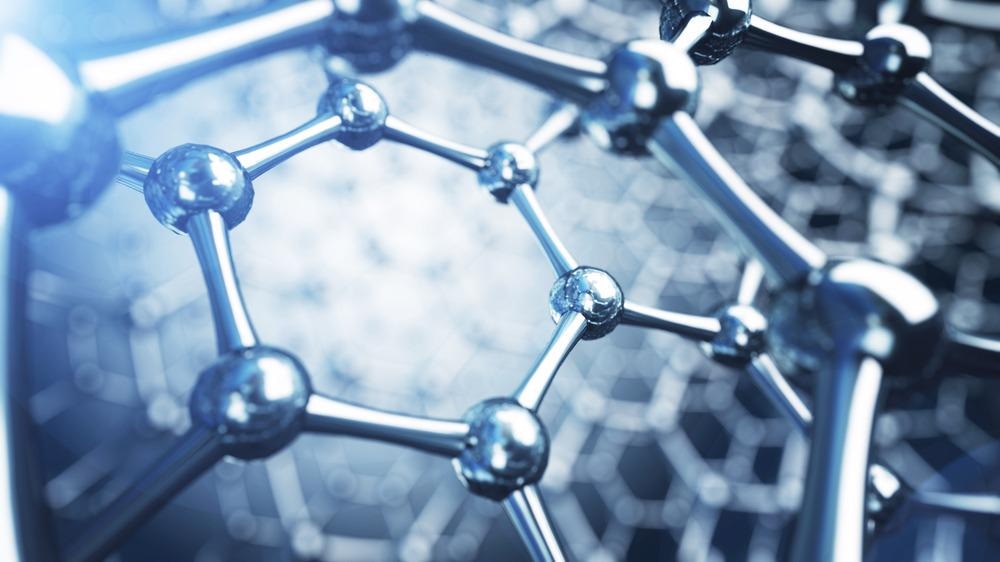According to a study published recently in the journal Nanotechnology, a group of researchers successfully produced oxygen plasma-treated 3D graphene for increased formaldehyde detection.

Study: An effective formaldehyde gas sensor based on oxygen-rich three-dimensional graphene. Image Credit: Egorov Artem/Shutterstock.com
Three-dimensional (3D) graphene has a great promise for chemical sensing applications due to its large high surface area and intense electric conductance. Adsorbed gas particles on graphene act as electron donors, causing an increase in conductance.
Several problems, such as delayed reaction and extended recovery period, persist for 3D graphene-based nanosensors. As a result, research efforts continue to focus on increasing the activity of chemical gas sensors.
What is Graphene?
Graphene is a two-dimensional (2D) material with exceptional electrochemical redox characteristics.
High Elastic modulus and breakage pressure, good electrical conductance, excellent heat permeability, reduced contact impedance, high flexibility, large surface charge, and maximum optical transparency and elasticity are among these properties.
As a result, graphene can be used to create high-quality lightweight structures, medicinal and drug delivery systems, semiconductors, electronic components, wearable electronics, and energy storage systems.
The three-dimensional (3D) equivalent of 2D graphene is extensively employed in gas molecule detectors due to its distinctive 3D nano porosity structure and possible surface modification.
Advantages and Applications of Graphene
Graphene has a strong conductance and a high, potential surface area when compared to other carbon nanostructures.
For gas detection, graphene has promising potential use.
Various concentrations and architectures of gas adsorbent materials engage with three-dimensional graphene in various ways. Because weak Van der Waals forces bind the gas particles onto graphene, the impedance of graphene may be measured using simple electronic systems.
In comparison to nanomaterials, 3D graphene has minimal electromagnetic interference due to its high-quality crystalline lattice, which prevents excessive charge changes. Furthermore, chemoreceptor-based sensing modalities provide the benefits of low-cost apparatus, simple manufacturing, and immediate detection.
Dangers of Formaldehyde Gas
Increasing stringent regulations for gas measurement have been implemented as modern living conditions have improved, and more emphasis has been paid to pollution prevention, vehicle emissions, and environmental contamination.
Indoor and automobile vehicle emissions endanger public health and have become a global problem.
Formaldehyde is a popular and good representation among the current dangerous gases. It is a translucent, soluble irritating gas that is found in epoxy decorating materials like wallpaper and is unstable.
Prolonged exposure to lesser levels may induce asthma, cancer, and abnormalities in human beings, while high levels of 20 to 100 ppm are extremely bad for health.
Detection of Formaldehyde Gas using O2-rich Graphene
As a result, a reliable formaldehyde detector is an urgent health demand. Some formaldehyde detectors use amperometric approaches, which need UV irradiation or proteins as receivers, which are susceptible to the complex formation and thus have weak long-term durability or necessitate particular storability.
A traditional semiconductor detector needs a high operating temperature or UV-light stimulation from the outside.
Graphene, on the other hand, has a high electrical conductance at low operating temperatures and may be combined with semiconducting oxides to increase surface area and conductance.
Due to the electron transport pathways supplied by the metallic nanoparticles, graphene/metal oxide composite materials can enhance the accuracy of formaldehyde sensors.
In this study, the researchers evaluated the structural performance correlations of 3D graphene with various treatments.
They used three methods to treat 3D graphene, including untreated, HNO3 exfoliation, and oxygen plasma processing and used formaldehyde as an illustration to demonstrate their use in chemoreceptors for sensing applications.
Research Conclusion and Prospects
The researchers created chemoreceptors out of oxygen plasma-treated 3D graphene and exhibited great gas-sensing capability using formaldehyde as a reference.
In comparison to nontreatment and HNO3 ablation, oxygen plasma processing proved to be the most effective method for functionalizing graphene with the amine groups and aldehyde charges.
The superior gas-sensing capability relying on oxygen plasma processed 3D graphene indicated the topological crosslinking. When compared to pure 3D graphene, the reaction time was reduced by 34% and the recovery period was reduced by 38%.
Furthermore, 15 minutes of pretreatment with oxygen plasma resulted in maximum gas-sensing efficiency. These discoveries are likely to accelerate research in chemoreceptor-based sensing applications.
Reference
Zhang, S. et al. (2022). An effective formaldehyde gas sensor based on oxygen-rich three-dimensional graphene. Nanotechnology. Available at: https://iopscience.iop.org/article/10.1088/1361-6528/ac4eb4
Disclaimer: The views expressed here are those of the author expressed in their private capacity and do not necessarily represent the views of AZoM.com Limited T/A AZoNetwork the owner and operator of this website. This disclaimer forms part of the Terms and conditions of use of this website.